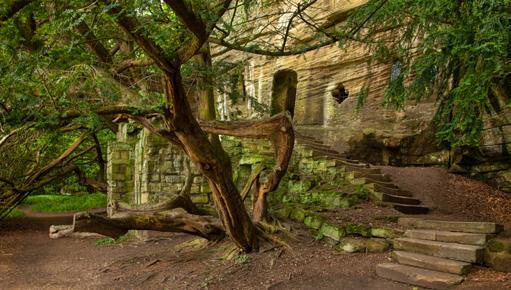
5 minute read
Past beliefs
FEATURES Past Beliefs
In the here and now, in a world dominated by a few major religions, it is difficult to get a handle on how earlier belief systems operated and developed within their respective societies. GWIL OWEN ARPS
Small Aten temple. Temples in the city were aligned to the rising sun
We often forget that our western Christian church has behaved in different ways over the centuries: as a small sect - initially, as a major political body - Pope Gregory VII and Henry IV at Canossa for example, and with the rise of protestantism as a collection of groups with social agendas. Its history, most history indeed, is written by the elite and the powerful. The general population is mostly silent. Here are two examples from the past of how belief systems might be interpreted in different ways.
1 - Egypt’s new kingdom; the reign of Akhenaten: c.1350 BC.
Akhenaten - aka the heretic pharaoh - changed the state worship system from a broad range of gods to that of one god - The sun god, the “Aten”. To further emphasise this he founded a new capital in middle Egypt, roughly half way between Cairo and Luxor. This city and its associated farmland occupied an area some 17 by10 kilometres between the eastern and western desert escarpments. His new city was on the eastern bank of the river. Along with two major temples, an administrative centre and housing for citizens, there were outlying settlements for the labour forces. The city was still a work in progress when Akhenaten died some three and a half decades later.
These bald facts do not tell us how his beliefs operated in practice. Was his monotheism as expressed in the textual evidence rigidly enforced? - there have been excavated shrines to other gods within the new development. He continued the pharaohonic practice of interceding with the god to ensure that disasters did not happen - was this politically expedient?
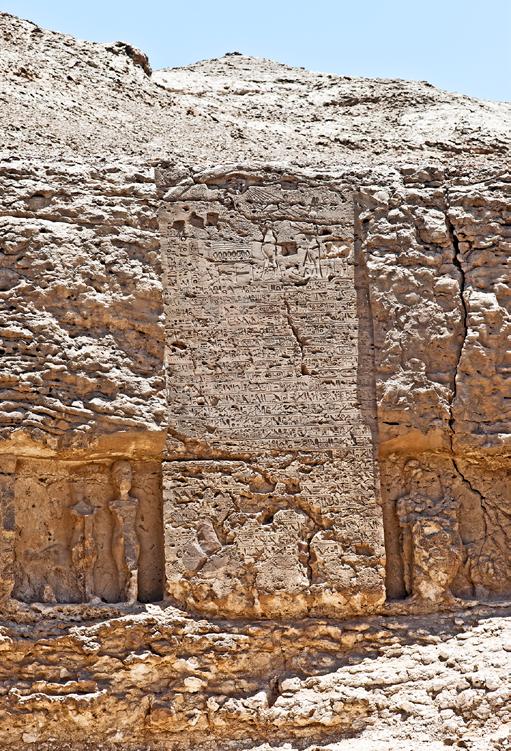
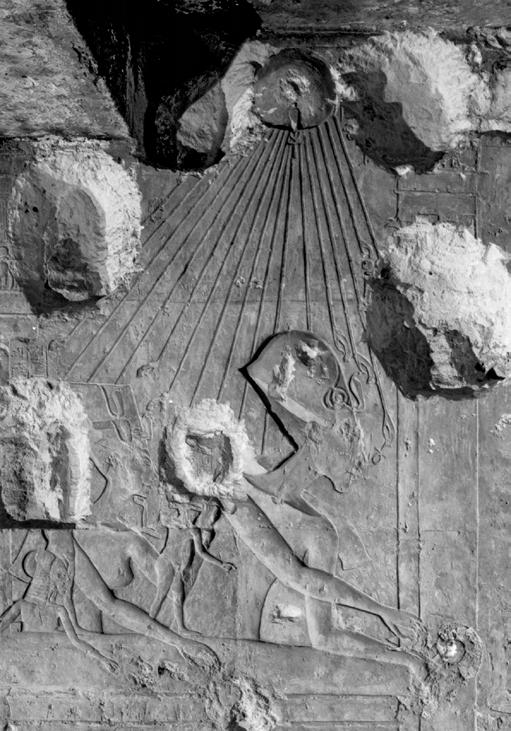
Chariot procession. Royal processions were major events.
Many of the images in the city’s tombs portray the royal family being protected by the Aten, at leisure in palaces, or riding in chariots in processions - was
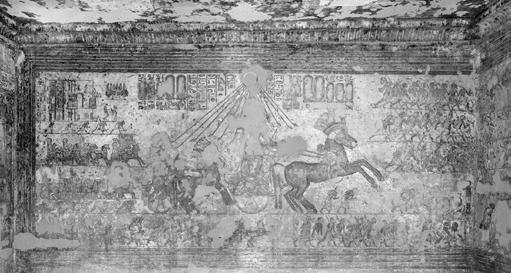
this perhaps a cult of the personality? And what of the common man? Apart from some evidence of other cults operating, his voice is silent.
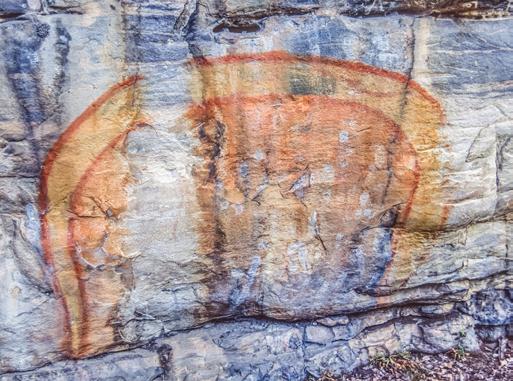
Nourlaangie rock. This panel at Nourlangie was repainted in the 1960s, refreshing the traditional stories. The little figure top left is Lightning Man, a mischief maker.
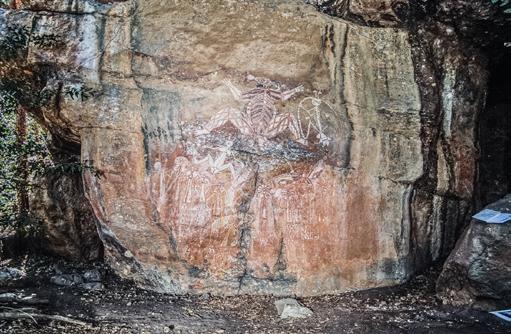
Lightning man cliffs. The view of Nourlangie Rock. In the distant cliffs is Lightning Man’s local home.

Art panel. This panel includes from left to right, the natural, the modern and the mythical world.
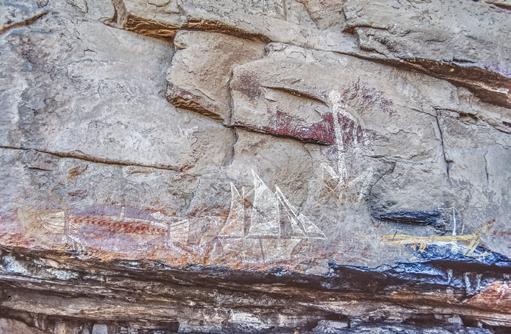
2 - Australian aboriginal culture.
Understanding the archeological evidence for prehistoric aboriginal cultural practices is more difficult. The timescale involved is huge. Settlements have been dated to c. 60,000 BC. Within this timescale there is evidence for more than one population movement as sea levels have varied over the millennia.
One major problem is that aboriginal culture still exists, and modern biases influence how the past is understood. For example each group storyteller may be expected to tell the same tale but in his or her own way. This is complicated by the commonly accepted principle that accurate transmission of facts, verbally, person to person, only extends to three generations.
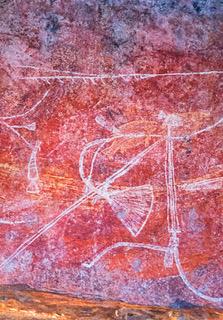
So what does Australian rock art say? General categories include creation stories, ancestor stories, natural history and modern history. Latterly aboriginal art has been integrated with art in general as the modern world sees it. There is within the rock art an ancient view of the world, a modern view of the world and a modern view of the ancient world.
Here, then, are two societies whose basic beliefs are apparent, whereas their practical operation, and what it all meant to individuals at any one time, is open to debate.
FEATURES Churches on my travels
Sharing my photographs, feelings and thoughts about some of the holy places I have visited. AMANDA MILLER LRPS
Hofkirkja Church in Oraefi, Iceland.
Hof Church, Iceland
This is the beautiful turf bound church Hofkirkja in Oraefi, Iceland. Built in 1884 it is one of the last to survive of its type. In all there are 6 churches throughout Iceland that are managed as historical monuments.
Tomb of Elizabeth I, Westminster Abbey
The magnificent structure that is the tomb of Elizabeth I and let us not forget Mary I. Located up a couple of twisting stone steps to the north of the Lady Chapel, stands the aisle in question. There is only one little oak door for both entrance and exit. During the day light pours through small Tudor bayed windows. The aisle is home to several other tombs and monuments including the infant children of James I. The grand tomb is large for the space that is barely possible to pass by. The lighting was terrible and yet somehow I like the effect, even though it meant tolerating a high iso. As the aisle is so small, patience was the name of the game.

Harewood, Yorkshire
September was feeling a lot more like November, and the rain had been relentless all day. Great trees cover the path that leads up to the church, hidden from view of the great house. As the light waned early and the gravel crunched beneath my boots, I was very conscious that I was alone. The house had now closed for the day and the few trippers who had come out in the weather had now gone. Heavy little droplets from the trees kissed my forehead, and with a final gust ofwind I stood before the entrance. On first sight (and I mean very first sight), it appears to be a large but plain structure. It is the monuments here that are the glory. There can be no doubt it is one of the finest collections outside of a cathedral.
They are breathtakingly beautiful. The exquisite detail of the fine white alabaster belies their age. Here we have Edward Redman (d.1510) and his wife Elizabeth Huddlestone (d.1529) residing in the damp grandeur of the North aisle, about them the wind whistled through the cracks in the windows and


